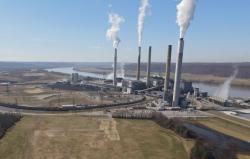
OR WAIT null SECS
© 2024 MJH Life Sciences™ and Turbomachinery Magazine. All rights reserved.
Here are some risks that have come with gas turbine advancements: Expert
At the 2018 Power Gen International conference and exhibition in Orlando, Florida, Vinod Kallianpur, presently with Samsung who has long years of experience on gas turbines at various OEMs, outlined the risks that accompany technologies that have helped to boost gas turbine performance and turbine temperatures. He highlighted the risks associated with technologies that will help to push the envelope in future.
For instance, in the E class at 1050 C, there was a risk of rogue contaminants melting above 1127 C. In the F class that used aero engine ideas in hot section, there was uncertain capability of Secondary Air-cooling System and TBC protection capability to protect materials to safe limits over considerably longer durations than in Aero Engine experience with same technology. There was a general trend to apply more oxidation resistant base metals adapted from aero engines, in comparison to more corrosion resistant selections in older models. But thin airfoil advanced technology compressor carried the risk of faster fouling from fine dust below filtration limit, uncertain compressor degradation rate, control curve uncertainty for managing combustion fuel quality.
In the present 1600 C class machines, additive manufactured combustor burners, R4 turbine blades (longer castings with internal aircooling), and rotating seals are used. General trends are use of CMC hardware, double-wall castings and additive manufactured hardware. Kallianpur says upgrading to more power density entails additional design modifications (mechanical structure) in manifolds and compressor front stages due to greater swirl intensity consequences.
Overall, Kallianpur said advanced GT model introductions generally have three limitations that make it difficult
to project Reliability, Availability, Maintainability and performance realistically:
- Uncertain reliability of Secondary Air-cooling system for functioning over longer durations to more aggressive load dispatch conditions than aero engine experience
- Uncertain Thermal Barrier Coating protections under greater gas path pressure gradients, and hotter temperature gradients to set fail-safe TBC spallation guidelines for preventing durability issues, because it may neither be projected from older technology experiences or aero engine experience
- Uncertain repair capability requiring more complex cavity flow-checks, and restoration procedures for castings that have generally thinner wall ligaments than present repair technology experiences.



